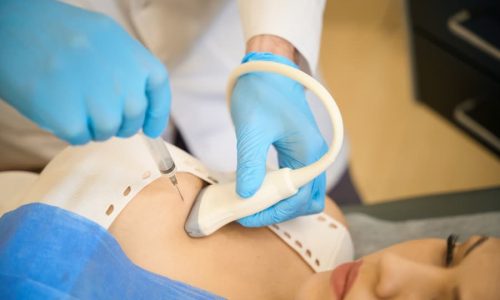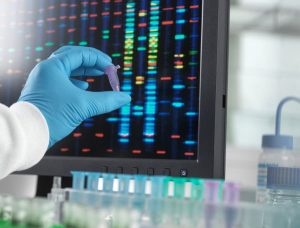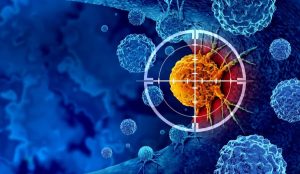
Recognizing Cancer Misinformation: Expert Insights from 2 RCCA Oncologists
“Consider the source.” It’s good advice for dealing with the sting of criticism or the allure of gossip, but two oncologists say it’s even better
HIPAA Alert: Potential Data Breach Learn More
Questions on Oncology, Hematology and/or Infusion Clinical Services due to COVID-19 Crisis – CALL 833-698-1623
Important Information for Our Patients Regarding the Coronavirus.
RCCA Providing Area Cancer Patients with Access to Care During Coronavirus Outbreak
RCCA Offering Patients Virtual Visits During Coronavirus Pandemic
Being referred for a breast biopsy can sound frightening at first. Suspicious mammogram results are concerning by themselves, and many patients expect their biopsy to be uncomfortable. Fortunately, a breast biopsy is not painful, and it does not always mean that a person has breast cancer.
Many people diagnosed with breast cancer turn to Regional Cancer Care Associates (RCCA) for care. RCCA is a group of more than 100 medical oncologists and hematologists who treat patients who have solid tumors, blood-based cancers and benign blood disorders at more than 20 locations throughout New Jersey, Connecticut, Massachusetts, and the Washington, D.C., area. They strive to educate patients while providing innovative care.
Here, we discuss breast biopsies and the role they play in breast cancer diagnosis.

A biopsy is the final stage of diagnosis for all types of cancer, including breast cancer. This procedure involves removing a small amount of fluid or tissue, called a sample, from the area that is suspected to be cancerous. The sample is tested in a medical laboratory to look for cancer cells and, if there are any present, to learn more about the cancer’s unique characteristics. A biopsy can tell oncologists:
Biopsy results are used to confirm a cancer diagnosis and to plan an appropriate treatment. Certain hormonal and molecular properties may indicate that the cancer is likely to respond to certain treatments, such as hormone therapy or targeted therapy.
A breast biopsy can be performed using a few different approaches. The specific type of biopsy used depends on a variety of factors, including:
The oncologist weighs all of these factors carefully before choosing the best biopsy method. The types of breast biopsy that may be used include:
Needle biopsies are the most common type used. Surgical biopsies are typically used only if the results from an earlier core needle biopsy were inconclusive or if the suspicious area is difficult to reach with the biopsy needle.
Before a breast biopsy, the physician will provide instructions on how to prepare. Breast biopsies do not require extensive preparation, though some types need more than others:
Patients can usually eat, drink, and take medications as normal before a core needle biopsy. If the patient is taking blood-thinning medications, however, they may need to pause them before the test. This helps to prevent excessive bleeding during and after the biopsy.
Surgical biopsies are sometimes performed under general anesthesia. If this is the case, then patients may need to stop eating and drinking for a few hours before the test. Blood-thinning medications should also be paused before the test to prevent excessive bleeding.
Breast biopsies are not painful. The procedures typically are done in an outpatient setting, such as in the doctor’s office or an outpatient surgical center. The procedure is typically very quick, though it may take longer if imaging guidance or surgery is needed. The process for each type is as follows:
Needle biopsies do not hurt. The local anesthesia keeps the breast numb during the procedure, so the patient should not feel more than light pressure. An IV (intravenous) sedative may be provided to help the patient relax during the procedure.
As with core needle biopsies, surgical biopsies are not painful. The use of local or general anesthesia means that the patient stays comfortable through the procedure.
People can usually return to normal everyday activities after a breast biopsy, though they may need to limit strenuous activity for a day or two. The doctor or nurse will provide instructions to care for the biopsy site, change dressings, and watch for signs of infection.
Breast biopsies can cause light bleeding, bruising, or swelling. This can make the breast seem larger. In most cases, this is nothing to worry about and will go away as the breast heals. The doctor will tell the individual when to call about issues. Needle biopsies do not leave any permanent mark, though surgical biopsies may create a small scar. Surgical biopsies may also change the shape of the breast, depending on how much tissue was removed.
Breast biopsy lab results can take a few days to a few weeks to prepare. When they are ready, the physician will contact the patient to schedule a follow-up appointment. This appointment is an opportunity to discuss lab results, including whether cancer was present and, if so, what the rest of the biopsy report means.
Not all breast biopsies identify cancer. In many cases, the suspicious area turns out to be harmless or the result of a benign condition, such as mastitis (a breast infection) or a cyst. If so, the patient may begin treatment for that condition. If cancer is detected, however, then patients must speak with an oncologist about what the next steps are. Further testing may be needed before treatment can begin.
Breast biopsies are an important part of cancer diagnosis, and they aren’t as frightening as they sound. Understanding what to expect from medical procedures can help patients feel more confident about their treatment. Regional Cancer Care Associates educates patients to help them avoid life-threatening cancer. RCCA specialists provide care to more than 30,000 new patients and 265,000 established patients each year. RCCA physicians offer patients innovative therapies, including immunotherapies and targeted therapy, cutting-edge diagnostics as well as access to approximately 300 clinical trials in community-based centers close to home.
For more information or to schedule an appointment,
call 844-346-7222. You can also schedule an appointment by calling the RCCA location nearest you.

“Consider the source.” It’s good advice for dealing with the sting of criticism or the allure of gossip, but two oncologists say it’s even better

Biomarker testing is the evaluation of samples of a patient’s tumor, blood, or both to identify the genetic mutations responsible for the development of cancer,

Medical research has made tremendous strides in improving how oncologists understand and treat cancer. One of the most exciting developments is the use of radiopharmaceuticals.

Regional Cancer Care Associates is one of fewer than 200 medical practices in the country selected to participate in the Oncology Care Model (OCM); a recent Medicare initiative aimed at improving care coordination and access to and quality of care for Medicare beneficiaries undergoing chemotherapy treatment.